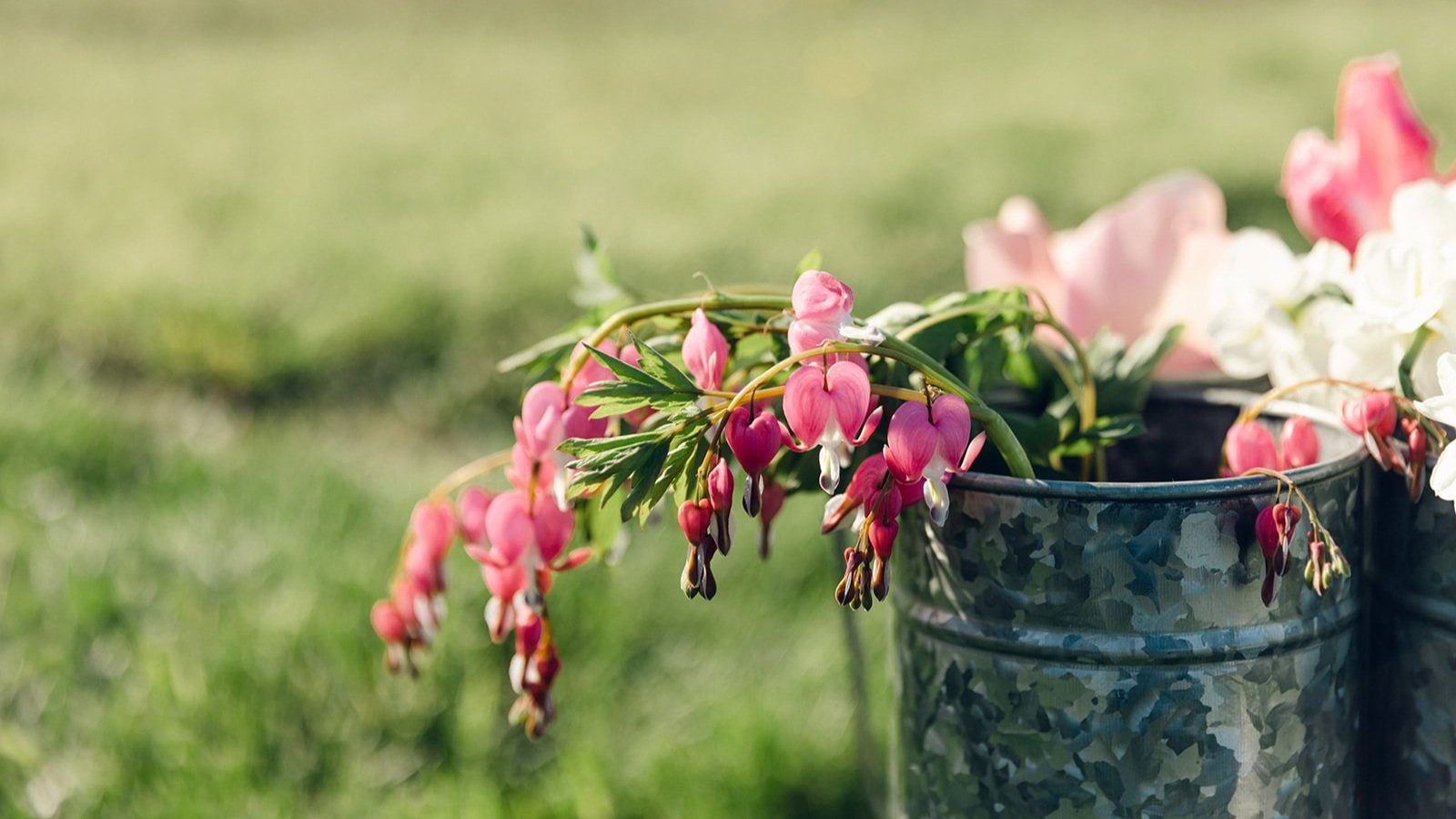10 TIPS FOR EXTENDING THE VASE LIFE OF YOUR CUT FLOWERS
Flowers can often seem delicate and short lived after cutting them in the garden, but with the proper techniques this can be the opposite for your arrangements. The following tips can set you and your cut flowers up for success with long lasting, vibrant arrangements that will last!
HARVEST IN THE COOLEST PARTS OF THE DAY
Harvesting your cut flowers in the morning or the evening is ideal because the flowers are more hydrated at these times and do not have to contend with the midday heat, causing less stress on your blooms.
USE CLEAN BUCKETS, TOOLS, & VASES
Always thoroughly clean your buckets and vases with hot soapy water prior to use. Bacteria is the enemy of cut flowers and can dramatically decrease the life of your blooms. Using clean, sharp snips to cut your blooms can prevent damaging your stems.
TAKE A BUCKET OF WATER TO THE GARDEN
The quicker you place your blooms in water, the better they stay hydrated and cause less stress of bouncing back from wilting. By taking a bucket with you, you can also take your time and enjoy your walk in the garden without worrying about your blooms wilting in the sun!
HARVEST AT THE PROPER STAGE
Know the proper harvest stage for the flower and foliage you are picking. Each variety has different requirements as to the best stage for harvest, and while this blog post could get quite lengthy to go over each flower, a general rule of thumb is we want to pick the blooms before the bees have pollinated them and when they are between one-third to one-half open. Spike flowers do well being picked at one-third open and disk flowers as they are just cracking open. There are definitely exceptions to the rule - as zinnias shouldn't be picked until they are fully open and has a stiff neck of its stem, and a dahlia won't open much further after being placed in the vase. For foliage – mature and firm stems are key. So, look for darker colored older stems and always slice up vertically on any woody stem to increase it’s hydration.
REMOVE THE BOTTOM LEAVES FROM STEMS
Leaves that fall below the water line in your vase will begin to decay very quickly. As leaves break down, they introduce bacteria into the water which prevents the stems from being able to take up water. I prefer to quickly strip the leaves as I’m picking out in the garden.
CONDITION YOUR FLOWERS
If you are planning on spending some time arranging and fussing with your stems to put in your vessel, give your flowers time to rest in a bucket or vase of cool water after picking for at least 3 to 4 hours to rehydrate. Conditioning your flowers will help the flowers recover post-harvest and improve even very delicate flowers’ vase life immensely.
RECUT EACH STEM
When you’re ready to arrange, recut each stem at a 45-degree angle to give them the maximum surface area to take up water. Stems that are cut flat can sit flat at the bottom of the vase which reduces water uptake and increases the likelihood of becoming clogged.
FEED YOUR FLOWERS
Cut flowers benefit from having 3 ingredients added to their water: sugar to eat, acidity to help them absorb water, and a biocide to prevent bacteria. So, the little packets you may have received with a bouquet or if you’ve visited our U-Pick Garden, they do work! If you are cutting flowers from your own garden and do not have flower food, following the other tips mentioned will still give you a great vase life! You can also simply add a tablespoon of sugar, about 2 tablespoons of something acidic like lemon juice, and a ½ teaspoon of bleach to a quart of water for a DIY flower food!
CHOOSE A COOL SPOT
Keep your flowers in a cool spot away from direct sunlight light. An arrangement placed by a sunny window and/or an overly warm spot, such as near a heat source like a heat vent or maybe your stove where you are cooking will wilt much faster than one kept in a cooler place away from direct rays. It is also said that keeping your flowers near ripening fruit or vegetables can reduce vase life due to the ethylene gas emitted by the ripening produce.
KEEP VASE WATER CLEAN
Change the water in your vase as needed. Depending on the type of flowers you pick or if you are using some type of flower food will determine how quickly the water will need to be changed. When I refill the vase water, I will clean the vase and usually retrim the stems to improve water uptake. However, if you made a more elaborate arrangement with a flower frog or chicken wire, you can "flush the vase,” where you take the arrangement to the sink and run running water into the vessel. As the water runs in from the faucet, the old water is pushed out and new clean water is added in. It might not be as thorough as the completely changing the water, but it will greatly improve the vase life without the need to redo the elaborate arrangement.
In short, the key to fresh, vibrant long-lasting flowers is keeping your flowers well hydrated and preventing dirt and bacteria, whether that be during their harvest or while arranging and displaying. I hope these tips can help you enjoy your blooms for a longer period of time and maybe encourage you to bring in a beautiful arrangement from your own garden or if you visit us at one of our U-Pick Events!
